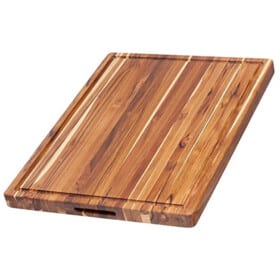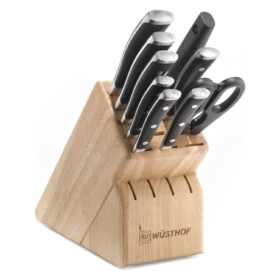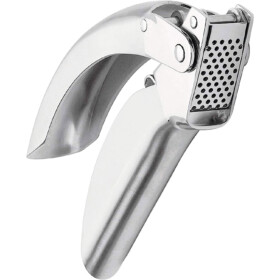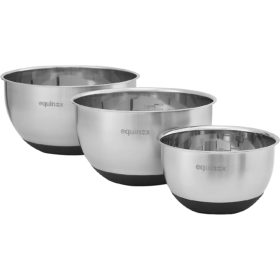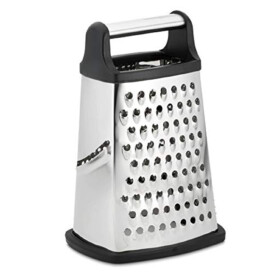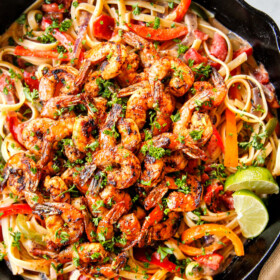HYPNOTICALLY COMPLEX FLAVORS. This Cajun Shrimp Pasta is seasoned with signature Cajun seasoning, but further layered with aromatics, nutty Parmesan and a splash of lime juice for a hypnotic blend will have you savoring each bite. VERSATILE. This Cajun Shrimp Pasta can work with whatever you have on hand. Swap the protein, veggies, pasta to suit your pantry, fridge or mood. QUICK & EASY! The shrimp takes minutes to prep without any chopping, then it’s just a quick sauté and simmer! CUSTOMIZABLE HEAT. This Cajun Shrimp Pasta can be fiery hot or as family friendly as you like. I’ve given specific directions in the recipe!
FOR THE SHRIMP:
I suggest uncooked shrimp that have already been peeled and deveined. Buying prepared shrimp makes your job a snap because all you have to do is defrost the shrimp. I like to use medium shrimp, 31-40 count shrimp (which means there are 31-40 shrimp in a pound), so you get shrimp in every bite without having to pause to cut up the shrimp. If you only have larger shrimp on hand, that will work as well, you will just have to cut as you go.
FOR THE PASTA:
Recommended pasta: fettuccine! Fettuccine is traditionally served with Cajun Shrimp Pasta in restaurants for good reason – the long silky noodles beautifully cradle the rich sauce and the noodles are thick enough (as opposed to spaghetti or angel hair) to stand up against the peppers and shrimp. Different pasta shapes: You may also use short pastas such as penne, fusilli, etc. if that’s all you have on hand but they don’t deliverer the same luxurious, slurpilicous experience. Go fettuccine if you can. Pastas types: You can use classic fettuccine, whole-wheat fettuccine or gluten free fettuccine. I haven’t tried it with zoodles or spaghetti squash but I imagine it would work well.
FOR THE SEASONINGS:
Cajun seasoning. Is a blend of spices, most notably paprika, garlic powder, onion powder, pepper, oregano and cayenne pepper, which give this Cajun Shrimp Pasta its signature flavor. You can use either homemade Cajun Seasoning or store-bought. I tend to use store-bought in this pasta because there are a lot of ingredients going on so it’s a nice shortcut. Just be aware that store-bought Cajun seasonings can vary significantly in both saltiness and spiciness. So, if you aren’t as familiar with your Cajun seasoning, you may want to start with less Cajun seasoning and less salt – then add more to taste. Cayenne pepper. Is optional if you would like spicier Cajun Shrimp Pasta. You can add it at the end if you aren’t sure how spicy the Cajun seasoning will make it. Salt and pepper. Every recipe needs salt and pepper! As previously mentioned, some Cajun seasonings are saltier than others, so when in doubt, start with less and more to taste. Lime juice. Please don’t skip! It cuts through the heat with pleasant burst of freshness. Either fresh or botted work great.
FOR THE VEGGIES/AROMATICS:
Bell peppers. Are another trademark of Cajun Shrimp pasta. You will need three small to medium bell peppers. I usually go for one red, orange and yellow but you may use any color combo you like. Red onion. Half of one red onion will do the trick. I don’t recommend substituting the red onion as its sweet flavor beautifully complements the heat. Garlic. I use both garlic powder and fresh garlic in this recipe but you may substitute the fresh garlic with an additional ½ teaspoon garlic powder. Garlic powder is used to season the shrimp because fresh garlic can burn when we’re going for the blackened shrimp, whereas fresh garlic is ideal for the sauce. Of course, you can use more or less garlic according to your personal taste. Fire roasted diced tomatoes. Are located next to the traditional diced tomatoes. Fire roasted tomatoes are NOT spicy – the fire simply means they have been roasted which gives them a complex smokiness. If you can’t find fire roasted diced tomatoes, then traditional diced tomatoes work just fine.
FOR THE SAUCE:
Olive oil. Use quality oil for the best flavor. You may also substitute with your favorite cooking oil. Butter. Use unsalted butter so we can control the level of salt. You may also substitute with olive oil. Flour. I use all-purpose flour but I’m sure gluten free flour would work as well. Chicken broth. Is more flavorful than just milk or heavy cream. Make sure you use low sodium broth so the Cajun Shrimp Pasta isn’t too salty. Heavy cream. Is also called “heavy whipping cream.” Just ½ cup adds that something-something luxurious that elevates the entire dish. If you’re trying to save some calories you can use half a cup of half and half or milk whisked with 1 teaspoon cornstarch. If you use the latter two options, make sure to simmer the sauce for a minute or so to thicken. Parmesan cheese. Infuses the sauce with its fantastic salty, nuttiness to transform it into an Alfredo-esque sauce. For best results and the BEST Cajun Shrimp Pasta recipe, use ONLY freshly grated Parmesan cheese. It is much more flavorful and melts into silky oblivion unlike powdered or pre-shredded cheese.
STEP 1: Marinate Shrimp
Begin by adding shrimp to a medium bowl and toss with 1 tablespoon Cajun seasoning, 1 tablespoon lime juice, and ½ teaspoon garlic powder. Set aside. While the shrimp is marinating, start cooking the pasta and chopping the bell peppers, onions and garlic. As soon as you’re done, you can cook the shrimp.
STEP 2: COOK PASTA
Cook pasta just until al dente according to package directions. Al dente means the pasta will still have a little bite. Reserve ½ cup pasta water before draining pasta. This will give you the option to thin the sauce if needed with reserved pasta water.
STEP 3: COOK SHRIMP
Melt 1 tablespoon butter with 1 tablespoon olive oil over medium high heat in a large skillet. You will want to work in two batches unless you use large shrimp. Add shrimp and spread into an even layer. Cook 3-4 minutes, just until shrimp are opaque and cooked through, flipping half way through. Scrape shrimp and juices into a bowl. Set aside. After shrimp is cool enough to handle, you can chop tails off if you desire.
STEP 4: Saute ONION AND BELL PEPPERS
To the now empty pan, melt 1 tablespoon butter with 1 tablespoon olive oil over medium-high heat. Add onions, bell peppers, 1-3 teaspoons Cajun seasoning (see notes), ½ teaspoon salt, ¼ teaspoon pepper, and optional cayenne pepper (if you want it spicy); cook for 2 minutes. Add garlic, sprinkle in flour and cook 1 additional minute.
STEP 5: Add Sauce InGREDIENTS
Turn heat to low and slowly whisk in chicken broth and heavy cream, stirring constantly until smooth. Stir in diced tomatoes. Turn heat to medium high and bring the sauce to a simmer. Simmer until thickened, stirring occasionally, approximately 3-5 minutes. Reduce heat to low and stir in lime juice followed by Parmesan cheese until melted.
STEP 6: COMBINE
Stir in pasta and shrimp until well coated in sauce, adding additional reserved pasta water or heavy cream if needed to reach desired consistency. Taste and season with additional salt, pepper and/or cayenne pepper to taste. Garnish with freshly grated Parmesan Cheese, fresh parsley and lime juice (optional).
Don’t over marinate shrimp. Don’t marinate shrimp longer than 30 minutes or the lime juice can break down the shrimp proteins and make them mushy. Use a heavy bottom skillet. A cast iron skillet is ideal for blackened shrimp because it conducts heat evenly and gets very hot. Wait until the skillet is very hot before adding the shrimp to achieve the coveted blackened crust. Don’t overcrowd shrimp. If you use medium-size shrimp, you will likely have to cook your shrimp in two batches so the shrimp can be spread out into an even layer to sear and not just steam. Don’t over-cook shrimp. Cook shrimp just until opaque for the juiciest shrimp. Cook shrimp with tails on. I recommend cooking your shrimp with the tails on because the tail shells contain flavor that seeps out and we get more robust shrimp flavor. Once your shrimp is cooked and resting you can remove the tails if you desire. Salt pasta water. You should always salt your pasta water – it is the one chance you have for the flavor to penetrate the pasta and enhance the subtle pasta flavor – you can taste the difference. Use 1 tablespoon salt for 6 quarts of water. Don’t overcook pasta. I recommend testing your pasta 2 or 3 minutes before the box recommends – pasta should be al dente– meaning it should still be a little firm in the center/ have a “bite” to it. Stop pasta from cooking. If your pasta is done before your sauce, then rinse in cool water to prevent it from continuing to cook. Don’t worry about the pasta being cold because the sauce will warm it right up once combined. Prevent pasta from clumping. If you’re not using the cooked fettuccine right away, toss it with a little olive oil. This will prevent it from sticking together. Thin sauce if needed. The sauce can become too thick if its simmered at too high of heat or for too long. But don’t worry, it’s SO easy to fix! Simply stir in a little reserved pasta water after you combine it with the fettuccine until it reaches desired consistency. For an extra decadent pasta, add additional heavy cream to thin. Garnish! Garnishing your individual servings of Cajun Shrimp Pasta with additional freshly grated Parmesan, lime juice and fresh parsley really enhances the flavors and takes this pasta to a whole new level!
Can I use a different protein? I know this is Cajun SHRIMP Pasta, but that doesn’t mean you can’t turn it into Cajun Chicken Pasta – or even smoked sausage! Toss bite-size raw pieces of chicken breasts or thighs with the shrimp marinade and continue with the recipe. Can I make it vegetarian? You can make this pasta vegetarian by omitting the shrimp – although you will miss the succulent morsels! You can add in firm tofu or extra veggies such as mushrooms or zucchini. If you skip the shrimp, be aware you are skipping 1 tablespoon Cajun seasoning (from the marinade), so you may want to add additional Cajun seasoning to the sauce. Can I add different veggies? Although bell peppers are a favorite in Cajun Shrimp Pasta, you can still use different veggies such as zucchini, asparagus, carrots, mushrooms, broccoli, cauliflower, Brussels sprouts, green beans, etc. You can also add roasted bell peppers – yum! Can I use different tomatoes? Yes! I like fire roasted tomatoes for their complex smokiness and because they taste less acidic, but you can swap them for regular diced tomatoes if you prefer or fresh tomatoes or sun-dried tomatoes. You will probably want to use less sun-dried tomatoes because they have a stronger flavor. Can I use a different pasta? Absolutely! I am partial to fettuccine in this creamy sauce, but you may also use penne, cellentani, or any other larger pasta that can stand up against the hearty sauce. ‘ Do I have to use heavy cream? Heavy cream adds body and richness to this Cajun Shrimp Pasta, but if you’re trying to keep it lighter, then you can swap the heavy cream for half and half or milk whisked with 1 teaspoon cornstarch. Can I make it spicier? Absolutely! Add additional cayenne pepper to taste but be careful, a little goes a long way!
Salad: This Cajun Shrimp Pasta is beautifully creamy so it pairs nicely with a fresh, crunchy salad such as Wedge Salad with Blue Cheese Ranch, Strawberry Salad with Balsamic Vinaigrette, Apple Salad, Pear Salad, Roasted Butternut Squash Salad or Green Bean Salad. Bread: Mopping up Cajun Shrimp Pasta with bread is a must! We love Dinner Rolls, Garlic Bread, and Garlic Parmesan Butter Breadsticks. Fruit: Bright, fresh fruit is a delectable reprieve from the creamy, flavorful pasta. Serve this Cajun Shrimp Pasta with your favorite fruit such as pineapple, grapes, melon, etc. or try any of my favorite fruit salads such as Fruit Salad with Honey Lime Vinaigrette, Winter Fruit Salad with Honey Lime Poppy Seed Vinaigrette, Tropical Fruit Salad, or Pina Colada Fruit Salad.
Carlsbad Cravings© Original Tag @CarlsbadCravings and Use #CarlsbadCravngs Leave a Review, I Always Love Hearing From You!
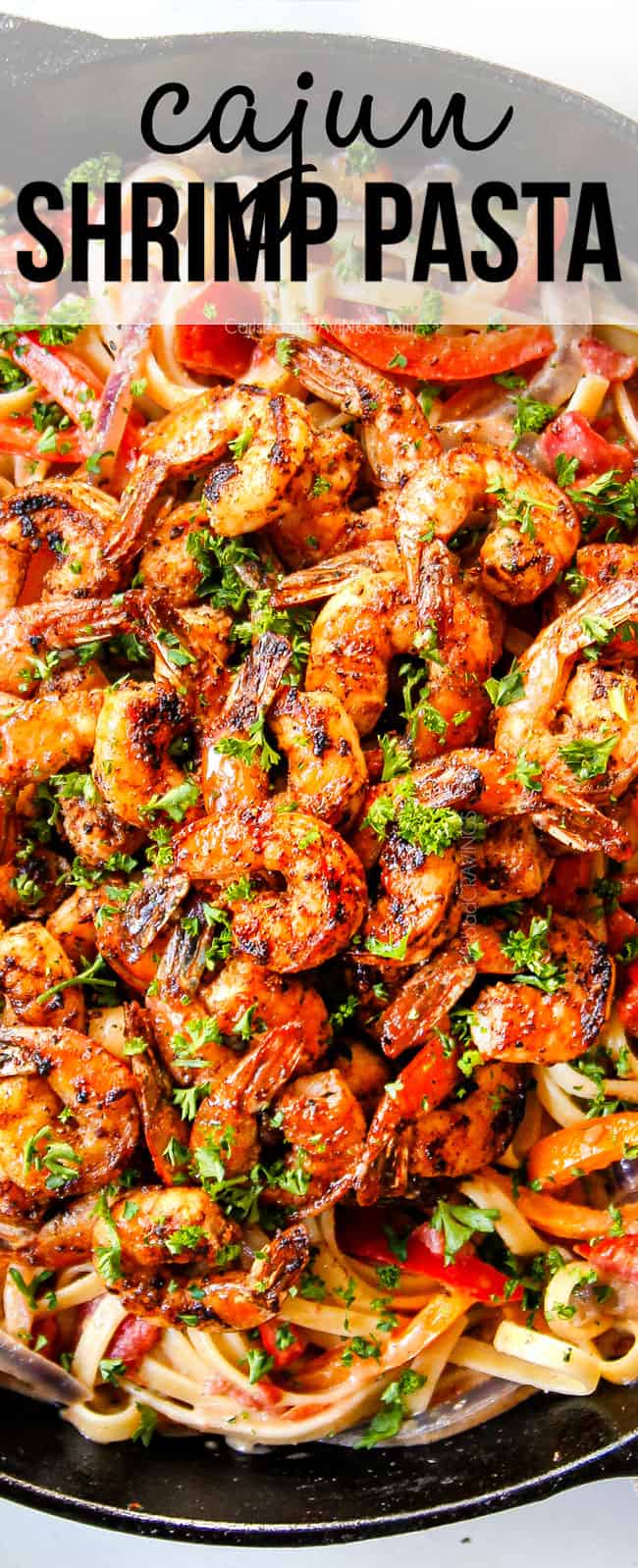

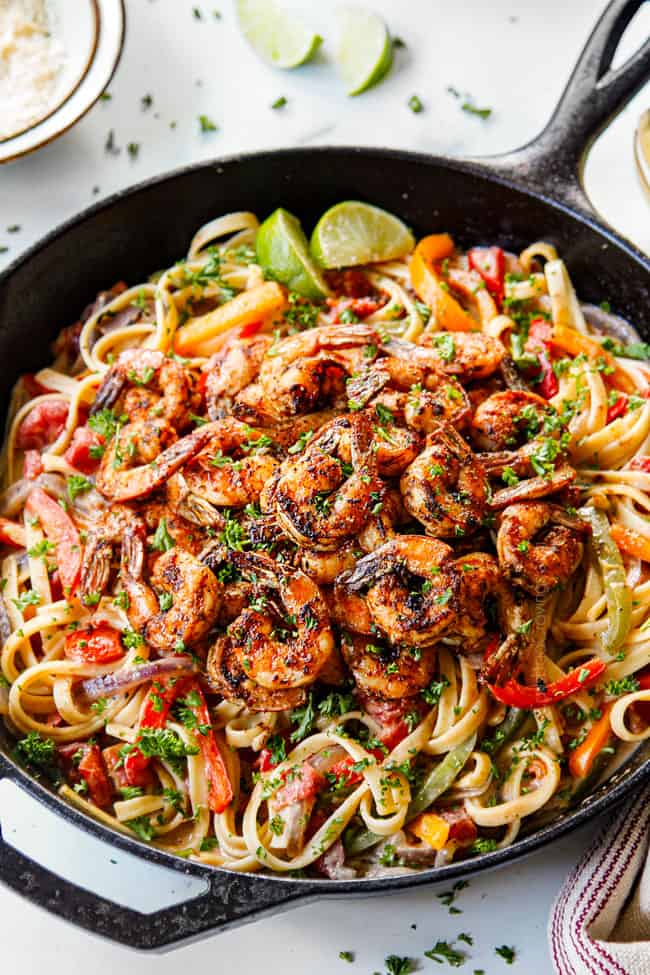
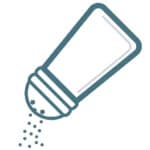
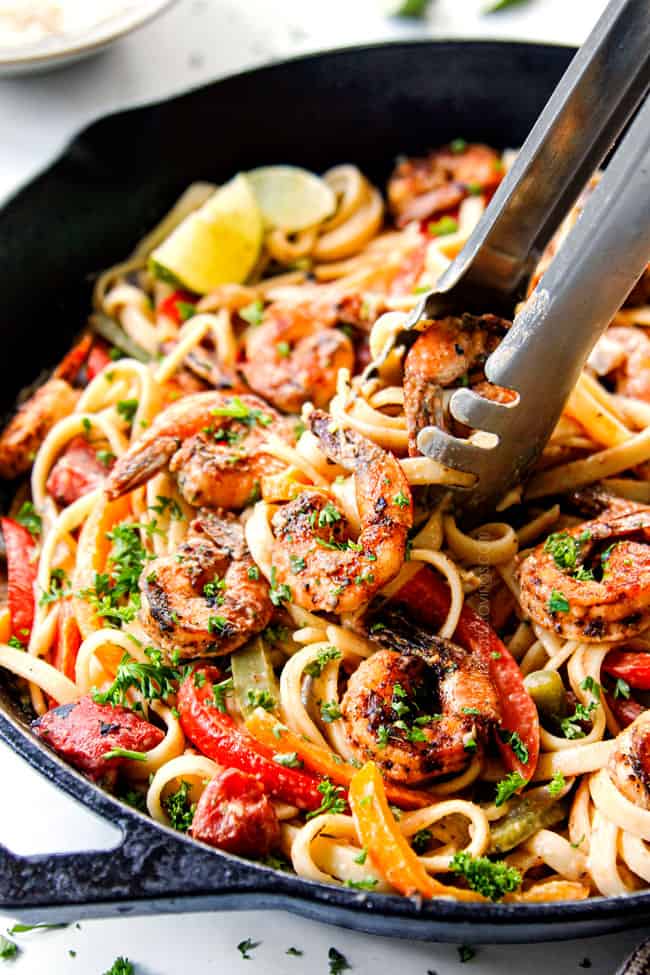

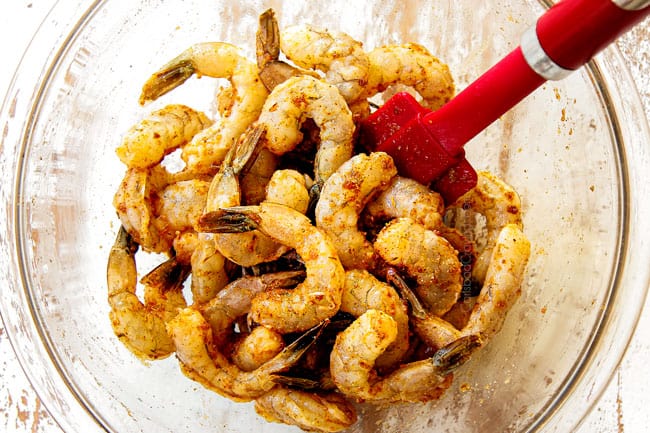
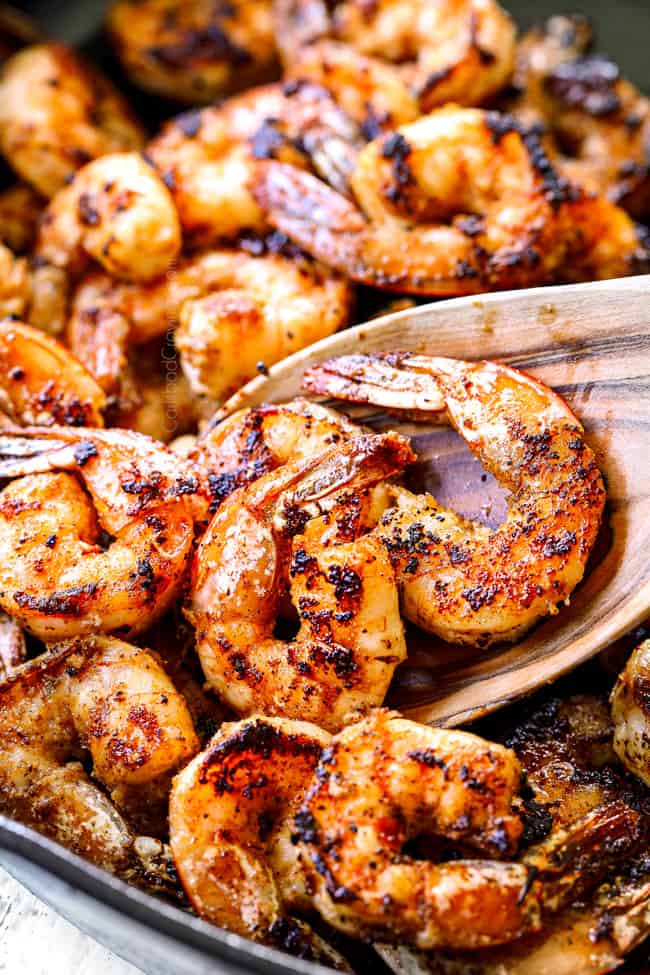
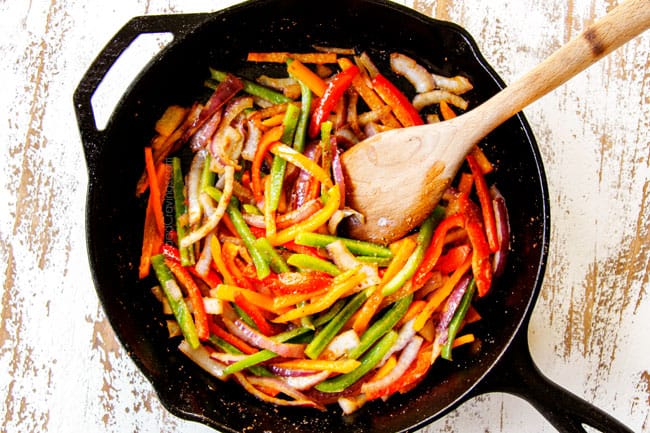
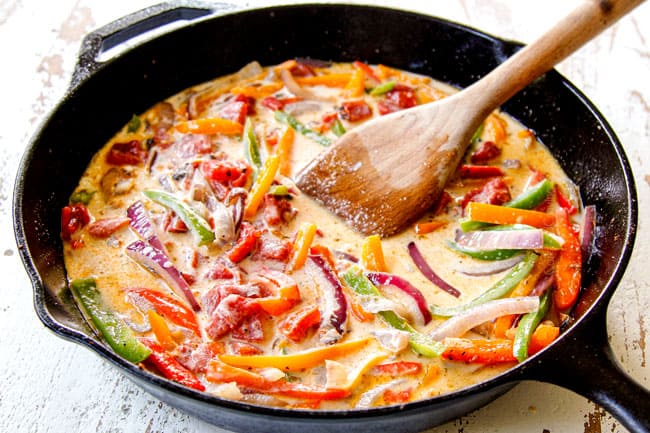
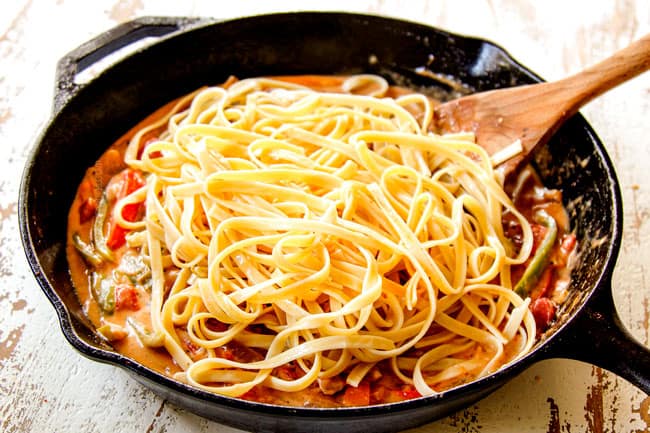


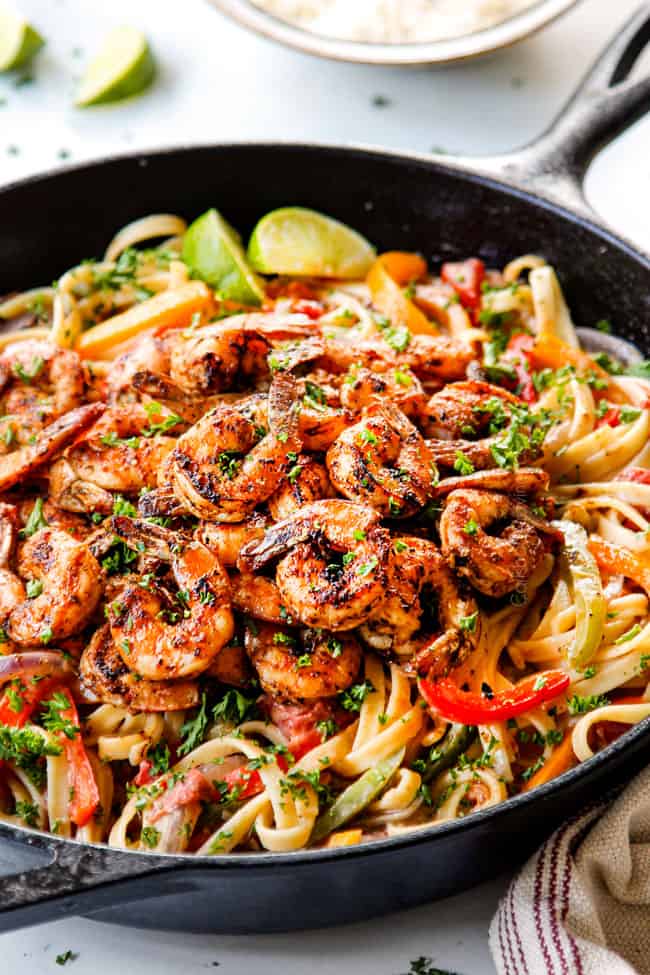

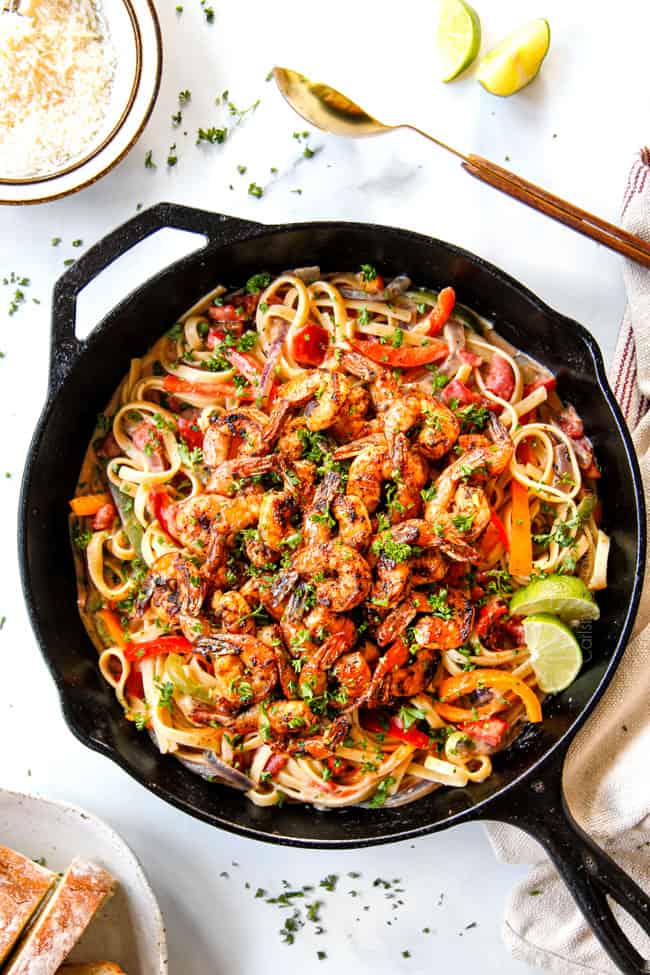




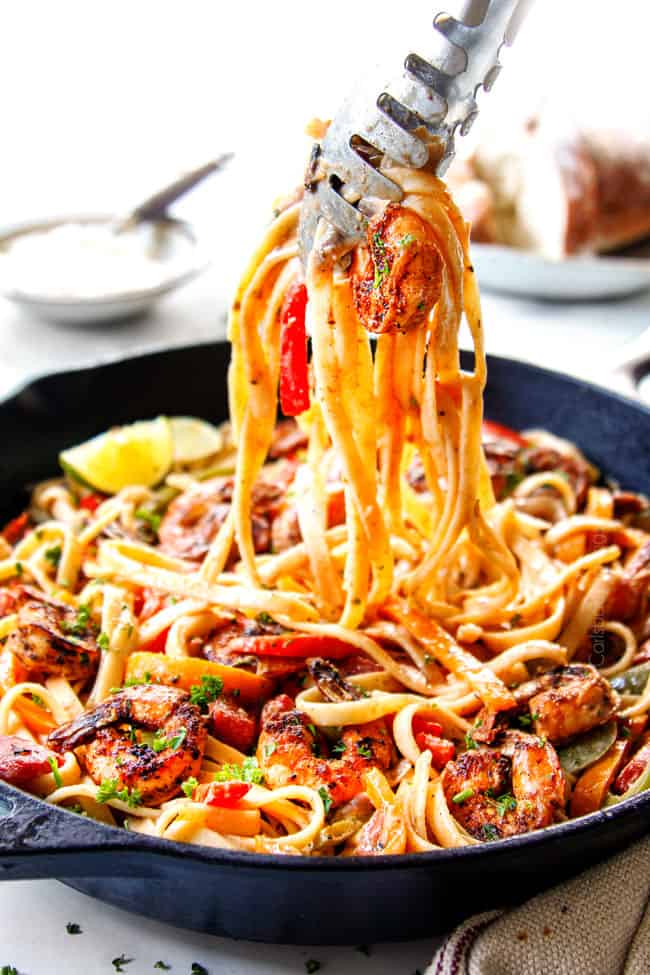

![]()



